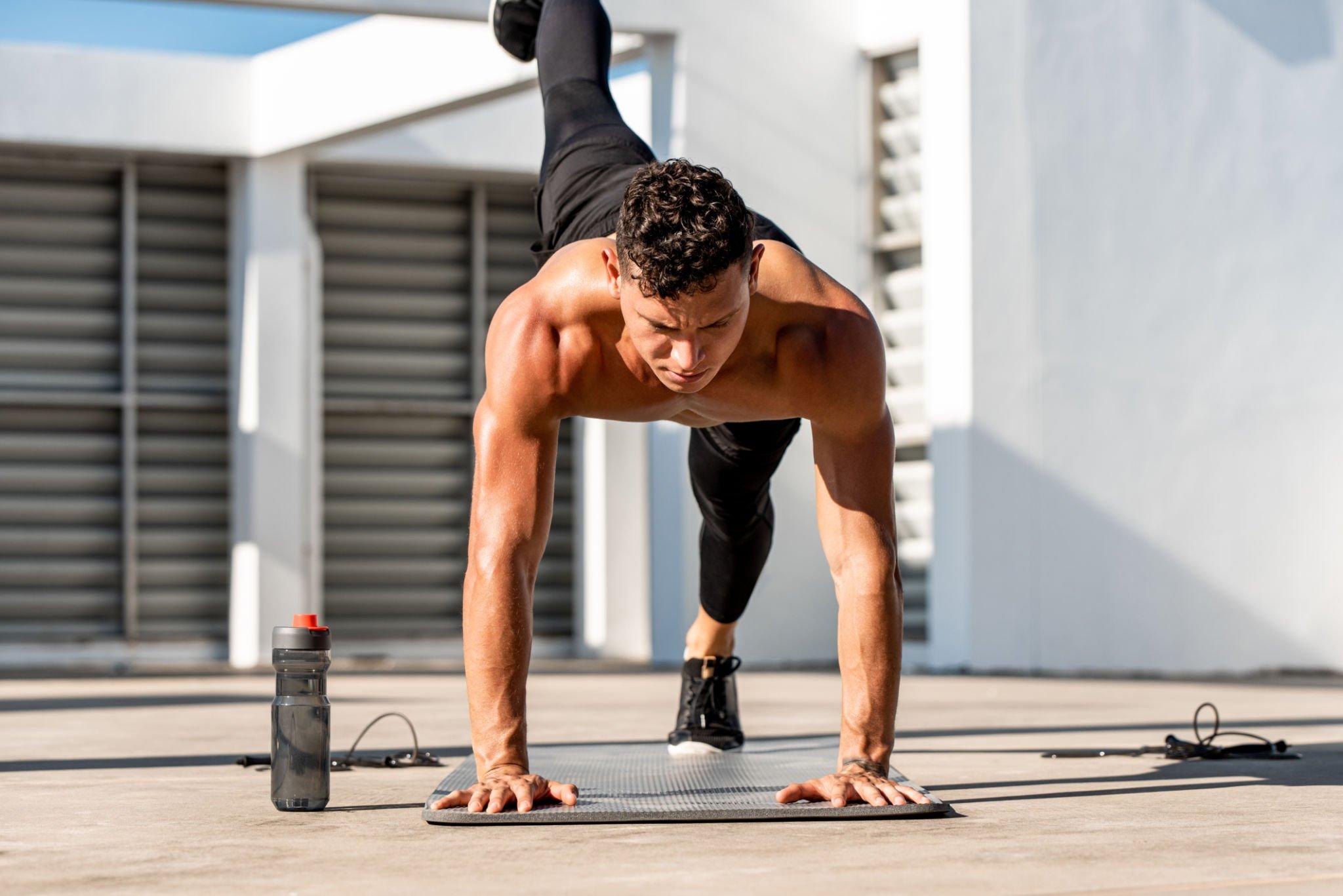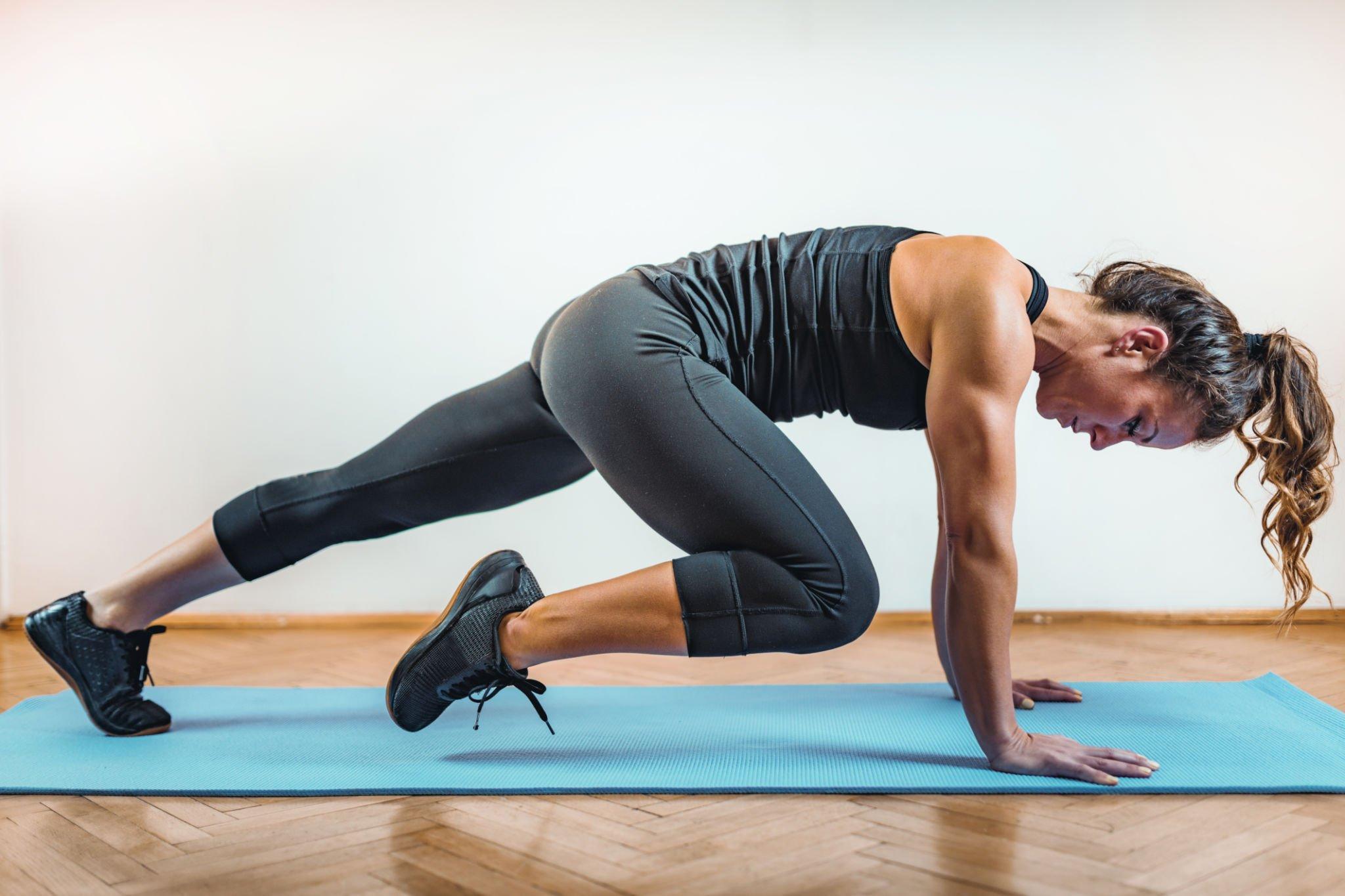High-Intensity Interval Training (HIIT) is sometimes known as High-Intensity Intermittent Training or Sprint Interval Training (SIT). HIIT training is a form of interval training; a cardiovascular exercise strategy where you alternate short periods of intense aerobic exercises with less intense rest periods until you are too exhausted to continue.
There is no universal time limit to how long these exercises last, but they usually last between 10-30 minutes depending on the fitness level of the person performing them. The duration of the workout is also dependent on the intensity of the session. Workout activities could include; biking, sprinting, and jump rope to mention a few.

HIIT Sample Exercises
HIIT exercises include a wide range of aerobic exercises, which provide the same health benefits as other traditional exercises. Here are a few such exercises:
Sprints
A quick sprint for 15-20 seconds followed by walking or jogging at a slow pace. This pattern should be repeated for 10-20 minutes.
Bike Sprints
Using a stationary bike, pedal as hard and as fast as you can for 30 seconds, and for 1 minute, pedal at a slow easy pace. Repeat this pattern for about 10-15 minutes.
Barbell Complex
This is merely a circuit of compound movements done with a barbell, it could involve; stiff-legged deadlifts, floor deadlifts, barbell rows, overhead presses, and floor barbell bench presses to mention a few.
Tabata Circus
Each exercise here is done for 20 seconds with 10 seconds of rest in between. A maximum of 8 sets of workouts should be done, with 20 seconds on and 10 seconds off. Exercises for the Tabata Circus include; Squat jumps, burpees and high-knee running.
Body exercises of whatever kind are perfect for HIIT. If you are looking for more of a challenge you can add weights to your routine.
Benefits of HIIT
HIIT has a number of benefits, one of them being that you can get maximum health benefits in minimal time, however, its benefits are not limited to this, they also include;
Burning a lot of calories in a short amount of time
HIIT is a much quicker way of burning calories and excess body fat. HIIT has been shown to burn over 20-30% more calories than other exercises. In this study, the HIIT repetition merely consisted of 20 seconds of maximal effort with 40 seconds of rest, meaning that its participants only exercised for one-third of the time other exercise groups (including cyclists and runners) did. This proved that HIIT helps you burn more calories in less time than you would have been able to do regular exercises.
Increased Metabolism
Several studies have shown that HIIT impressively increases metabolism for hours after these exercises have been completed. In fact, it has been discovered that HIIT increases metabolism rates even more than exercises like jogging or weight training. The same study also showed that HIIT made the body use fat for energy rather than store it. This increased metabolism is what allows you to burn calories after doing HIIT exercises.
Increased Muscle Gain
Aside from burning calories, HIIT also helps some individuals to increase their muscle mass. However, this muscle mass is usually in the legs and trunk which are the most used in these exercises.
Increased Oxygen Consumption
HIIT exercises improve oxygen consumption. Oxygen consumption refers to the muscle’s ability to use oxygen. It consists of long sessions of continuous running and cycling at a steady rate traditionally, but HIIT also produces the same results in far less time. HIIT can improve oxygen consumption as much as traditional exercises would, even if you only exercise half as long.

Who should do HIIT?
HIIT is a great workout solution for everyone in great physical health. HIIT encompasses a scope beyond box jumps, sprints, and burpees and includes a wide range of exercises suitable for people of various ages. A HIIT workout for an older person is very different than one that would be carried out by a younger person. HIIT exercises are highly subjective, as what feels tough for one person might not be for another.
HIIT exercises are modified to match each participant’s fitness level and do not encourage going overboard, meaning for someone who doesn’t work out often with low stamina, there is as much of a perfect exercise structure for you as a much more fit person with a lot of stamina who also has exercises that are designed to match their fitness level.
Who should not do HIIT?
While HIIT workouts might seem like a fast exercise routine for weight loss and time efficiency, they are however not ideal for everyone. There are certain people who should approach HIIT with caution or even avoid these exercise routines completely.
These people include:
- Pregnant women.
- Injured people or people just recovering from an injury.
- People suffering from osteopenia or osteoporosis.
- People with any form of incontinence, prolapsed, or pelvic floor weakness.
- People who are new to exercise.
- People who are immune-suppressed or sick.
- People who have a heart condition or have gone through cardiac surgery.
- People with asthma or breathing difficulties.
- People who fall into this category should avoid HIIT except when cleared by their healthcare providers.

What Happens to Your Body During and After a HIIT Workout?
HIIT workouts are to be done by giving 100% effort for a period of between 10-30 seconds. This is the optimal period for an anaerobic workout just before a 1 minute rest period. Doing it less will not bring any results and doing it more would overwork your body.
When working out anaerobically, your body produces lactic acid and because you can’t get enough oxygen to your muscles, your body supplements lactic acid for the missing oxygen. Adrenaline accompanies this lactic acid which moves throughout the body allowing for fat burn and muscle build-up.
After the workout, you are out of breath because you have deprived your body and it therefore needs to grab as much oxygen as it can in order to rebuild itself. Hours after HIIT your body keeps burning fat to replace lost nutrients thus increasing the metabolism. HIIT can continue to impact the body up to 40 hours after a workout.
HIIT is a quick and effective form of exercise, suitable for those seeking to lose weight fast as well as those who barely have any time for exercise. However, like all things, it should be done in moderation as too much of it can overwork the body.



